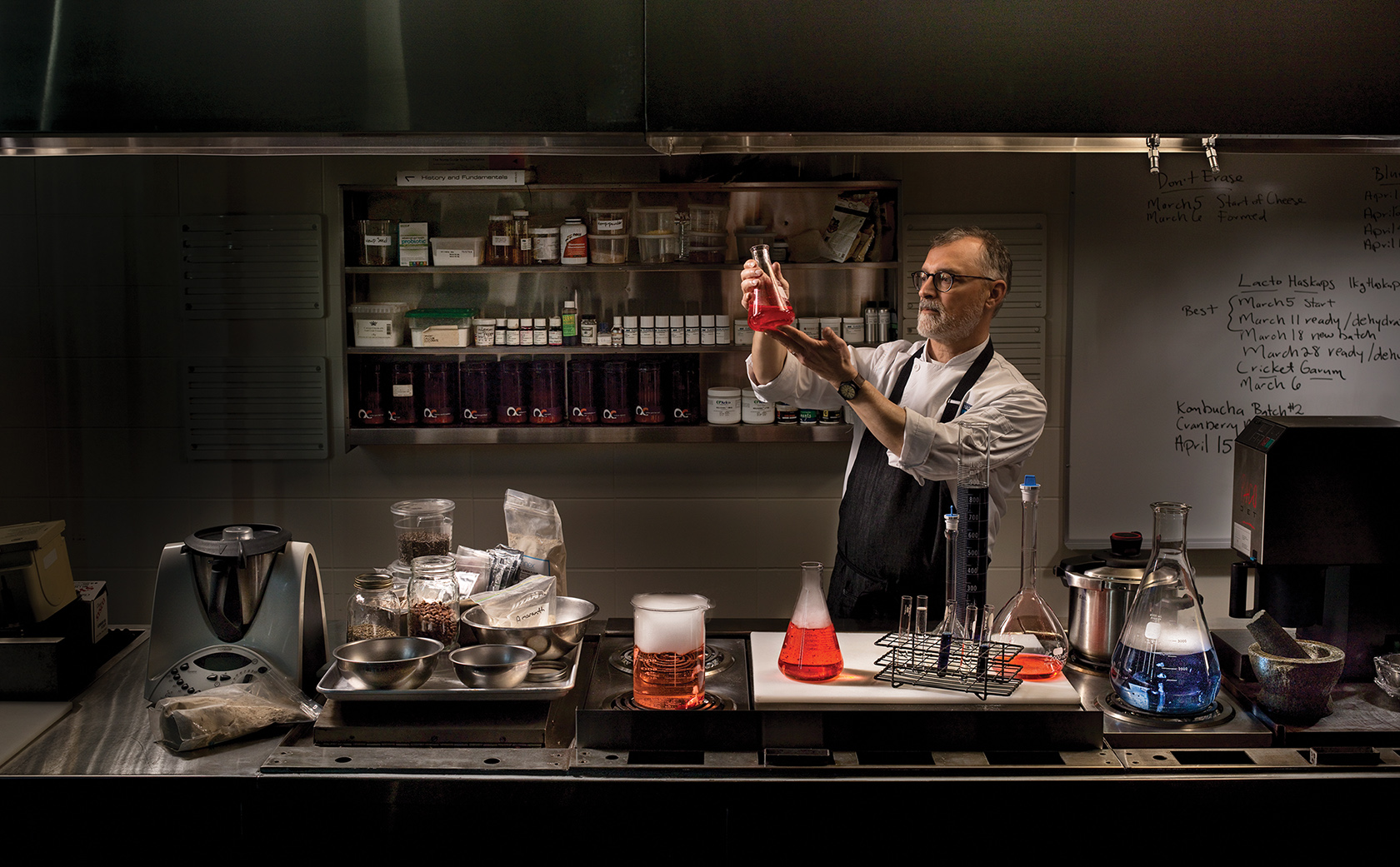If you walk into any noteworthy restaurant in Edmonton, there’s a very good chance that the chef was trained at NAIT. The polytechnic has earned a reputation as a culinary hub in Edmonton, and the Department of Culinary Arts and Professional Food Studies has been the driving force behind that. Now, there’s a new addition to the culinary world at NAIT — and it’s taking things in a new, innovative direction.
It all started with an institution-wide mandate. “NAIT had a mandate to get all the departments potentially into applied research,” says research chef Maynard Kolskog, who was a culinary instructor with NAIT at the time. “I got involved with a research project with Alberta Pulse Growers. That was my first project, to come up with value added, different types of pulse dishes… those were called downloads. Somebody would cover my courses, and then from there I started getting more and more downloads.”
NAIT began applying for funding, eventually getting a $2-million grant from the Natural Sciences and Engineering Research Council of Canada (NSERC) in 2017. It then brought in Dana Gibson, Director of Business Development, to lead the project, and she started by examining the agri-foods landscape and what was really required.
“We were looking around the ecosystem here — what could we be complementary with, what were the companies looking for — and they really wanted support in that chef-driven product development,” says Gibson. With that focus in mind, NAIT’s newest innovation centre was born.
The Centre for Culinary Innovation, set to open in fall 2019, is a 2,150 square foot space located next to the popular Ernest’s restaurant on the main campus. Kolskog had to study food science in order to obtain his certified research chef status, but he is a chef, first and foremost. “I need to be always looking at being innovative, but also making things tasty,” Kolskog says. It’s a unique blend of creativity and innovation that he’s honed over his time in the research kitchen. The product-development process isn’t dissimilar to creating a new recipe — “a lot of it is just our own imagination,” says Kolskog. “We try to be as innovative as we possibly can be and that’s where the ideas come from. How can we push this as far as we can go?”
